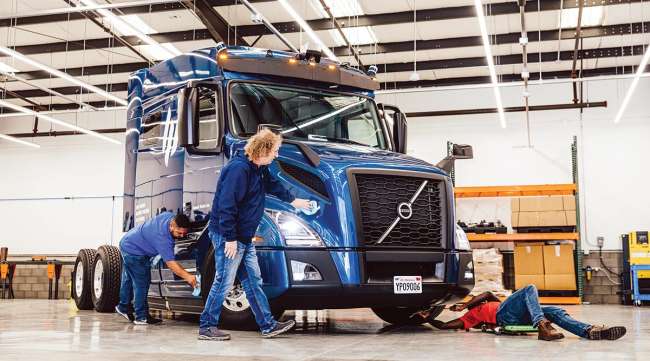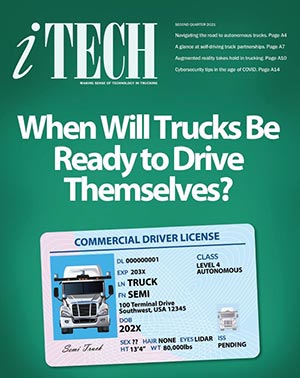Managing Editor, Features and Multimedia
Looking Ahead to Autonomous Trucking

[Stay on top of transportation news: Get TTNews in your inbox.]
Although autonomous trucks are still in their infancy, the continued development and eventual deployment of these vehicles represents a new frontier for the freight transportation business. As this technology advances in the coming years and decades, fleet operators that adopt self-driving trucks will encounter a new management challenge: finding the best ways to combine automation with human labor.
On that front, trucking can glean some initial insights from other industries that already have incorporated forms of automation for many years.
The U.S. manufacturing sector, for instance, has embraced robotics to boost productivity and become more competitive on the global stage.

Clevenger
Today, robots now handle much of the heavy lifting in auto manufacturing plants, for example, but of course there are still many people working in these factories as well, even half a century after the rise of modern industrial robotics in the 1980s.
The tasks performed by those employees, however, have shifted over the years. In many cases, labor-intensive roles have given way to positions that require more training and place a greater emphasis on technical skills.
Over time, a similar labor transformation will likely take hold in the trucking industry.
The debut of the first driverless trucks will not herald the end of the truck driving profession. In fact, the transportation industry will have ample opportunities to deploy this technology in ways that ultimately benefit drivers.
If driverless trucks are able to automate some longhaul routes, for example, more driving jobs could shift to regional and local routes that provide more home time and a lifestyle that better matches the preferences of the next generation of drivers.
At the same time, the emergence of autonomous trucking could create new opportunities and new types of jobs.
More Q2 iTECH

On a small scale, that is already beginning to happen today. As autonomous truck developers test and refine their self-driving systems, they are hiring experienced professional truck drivers to serve as safety drivers to monitor the technology and ensure that test vehicles operate safely on the highway. Autonomous trucks also will create support roles in dispatching, maintenance and customer support.
But this transition will not happen overnight, or even in a matter of years. It will evolve over the course of decades.
Technology development often follows an “S-curve,” and autonomous driving has been no exception, said Jan Becker, co-founder and CEO of Apex.AI, which provides an operating system and software development kit for developers of automated driving technology.
After many years of slow progress, automated driving began to advance rapidly thanks to technology breakthroughs such as machine learning that enabled software developers to gather more insight from sensor images.
During that steep part of the curve, expectations for autonomous vehicles began to rise based on the assumption that the pace of development would continue on that same trajectory.
“What we humans do, unfortunately, is think linearly,” Becker said.
Instead, the curve began to flatten again in recent years as developers put in the hard work and resources to tackle the remaining challenges of autonomous driving, including the rare edge cases the vehicle could encounter on the road.
As a result, this technology likely will scale up in stages.
For many years to come, the most widespread application of automated driving capabilities will not be driverless trucks, but driver-assist systems that augment and support the driver.
Over time, though, whether it’s within five years or closer to the end of this decade or beyond, we should expect unmanned vehicles to become part of trucking’s business landscape — at first in limited deployments, but eventually in much larger numbers as the technology continues to improve.
Even at that stage, however, fleet managers will not face a choice between driverless trucks and traditional truck drivers. Instead, it will be a question of how to combine the strengths of both in a way that improves safety and efficiency and ultimately benefits society.
Properly harnessed, autonomous trucks could yield benefits across the board — for fleets, shippers, consumers, and yes, even truck drivers.
Want more news? Listen to today's daily briefing below or go here for more info:




